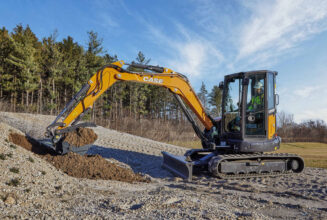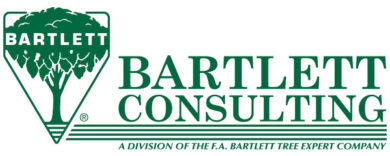The Outdoor Room Boom
By Don Eberly and Laura Drotleff
Homeowners want their own little piece of paradise, where they can enjoy the Great Outdoors in the comforts of home. With increasing interest in outdoor living, homeowners are realizing the return on investment that outdoor rooms provide, and even in a tough economy, they continue to pursue their perfect backyard oasis. Landscape designers and contractors can help their clients realize this dream by providing expertise and guidance through the design/build process.
With several elements to outdoor room design, educating homeowners about their options in the realm of design and installation possibilities can help landscape professionals sell larger projects. The first step is identifying how the client wants to use the outdoor living space. Is the goal to use the space for entertaining, or will it be a private space for relaxation? Does the homeowner want a space ideal for observing nature or prefer an extension of the interior living space?
“Based upon a client’s intentions for the use of a space, the designer can then plan a design that will best fit with the homeowner’s specific needs,” said Tad Varga, president of Three Birds Casual, a manufacturer of premier outdoor furniture.
Jeff Richard, chief financial officer of the Pavestone Company, specializing in hardscape paver and wall products, agrees with this pre-planning mentality. He also adds the importance of knowing exactly who will be using the space.
Other key considerations include what climate and environmental concerns should be addressed, and there are always the client’s budget and installation timeframe to consider. “Asking the right questions and closely listening to what the customer wants to achieve will help the landscape professional guide the customer through the buy-in process,” said Richard. “Once this is accomplished, landscapers can use their combined products and services to consultatively give their customers what they desire.”
Building boundaries
Defining an outdoor room with a foundation structure such as a pergola or other shade structure changes the overall feel of the space by setting clear boundaries and increasing intimacy and privacy. Roof and covered structures are growing in popularity to enhance year-round usability of outdoor rooms and kitchens.
Steve Ostrowski, owner of ShadeFX Canopies, and Lou Maglio, owner of Walpole Woodworkers, co-created shade pergolas, a line of wooden or cellular vinyl pergolas with retractable and integrated canopy systems. The structures address the challenge of more traditional pergolas, which while aesthetically charming and reminiscent of European gardens, are sometimes impractical due to weather issues. Ostrowski and Maglio have found that shade pergolas provide customers with a diverse, long-term use of their outdoor living spaces, and also address functionality problems by blocking sun to reduce sun fade on furniture and fabrics, for example.
“The monorail drive pergola canopy system developed by ShadeFX Canopies eliminates the problems of attaching linear track systems to structures prone to shifting or moving over time,” said Ostrowski. The company’s monorail drive design is patent pending worldwide.
Ostrowski and Maglio sell standard shade pergolas directly to contractors who want to handle their own installations. The company also provides customized jobs to save contractors time and expenses, including spec drawings, budget engineering, fabrication, and delivery. Installation of a foundation structure such as this will likely open opportunities to cross-sell other features such as lighting, masonry and heating presenting landscape professionals with opportunities to offer project upgrades.
Handling hardscapes
Using pavers in outdoor room construction provides landscape contractors and homeowners with a variety of attractive and affordable solutions for everything from outdoor patios and pool decks to fire pits and retaining walls.
According to Richard, application is the most important consideration for selecting and incorporating pavers for outdoor spaces. Contractors should consider whether the pavers be used to assist in the design of a theme, for comfort or functionality. “We suggest determining upfront if the pavers are going to be part of an outdoor living design concept and what other products could be used in conjunction,” he added.
Landscape contractors can enhance clients’ buy-in potential by showing them photos of past projects. If photos are scarce, professionals can turn to vendors like Pavestone to help illustrate their designs. “We try to guide landscape professionals with past examples, photographs and design opportunities,” said Richard. “Visual examples of outdoor living areas usually are the best selling tools. Developing a photo book to show examples of each application is essential.”
Pavestone Co. offers several options for popular outdoor applications, and provides guidance to contractors as to which materials are best suited for specific features. For example, Pavestone’s Plaza Stone and Venetian Stone pavers are suited for outdoor patios, pathways and pool decks, whereas fire pits are typically built with Anchor Highland Stone and Rumbled Wall pavers.
Permeable pavers have become popular for fireplaces, fire pits and outdoor kitchens, as well as patios and pathways. “This is a growing trend that will continue to be important for contractors as sustainable or green building becomes more widely adopted,” said Richard.
Using such paver products and ones that are prefabricated, like pre-built wall systems, can impress clients while saving contractors time and money with retaining, seating and garden wall installations.
Finding furniture
According to Varga, the intended practical use of outdoor rooms and who will be using them is vital information in deciding the kind of outdoor furniture to incorporate. “Once this is determined, designers can choose from many different styles and designs of furniture to fit just about any person’s taste,” said Varga. “If a client has a small family, they will not need as large of a dining set unless they plan to entertain.”
Providing the client three or four furniture set options based upon the use of the space can help streamline decision making, yet allow the homeowner to feel as if he/she had a major part in selection. Varga advises that when ordering furniture, space designers should plan for delays, allow ample time for delivery, and communicate with clients to avoid misunderstandings. “Set realistic timeframe expectations for furniture delivery,” he said. “Some items ship quickly, and other items take up to eight weeks for delivery. As long as the client is aware of the timing, there normally isn’t a problem, but when the client expects everything right away, they get pretty upset when that doesn’t happen.”
For contractors who concentrate on installation more so than design, partnering with vendors for advice and planning makes good sense. For example, Three Birds Casual offers design services for contractors who need help creating a design-oriented floor plan. Among other things, this can include planning like-color-coordinated cushions to fit individual style preferences.
Today’s homeowners are seeking outdoor furniture and accessories that are as comfortable and functional as their traditional indoor furniture. As a result, many companies are focusing on designs that can be used outdoors and indoors.
“The distinction between indoor and outdoor furniture seems to be somewhat vanishing,” said Jaclyn Kotzum, marketing director for the International Casual Furniture and Accessories Market, held each September in Chicago. “You can take the design from inside the home and use it outside, or vice versa, and outdoor pieces are multifunctional enough they can be used in both settings, depending on need.”
Functionality isn’t the only improvement. According to Kotzum, outdoor furniture design has become much more high-end and fashion-forward, with colors and patterns taken right off the fashion runway. Additionally, sustainability plays a large role in furniture trends, with many manufacturers using Forest Stewardship Council-certified and reclaimed wood in their designs as well as recycled plastics.
Creating harmony and flow
Ultimately, the goal is for the homeowner to thoroughly enjoy a finished outdoor living space that suits specified needs and wants, and captures the homeowner’s interests and lifestyle. Developing a design that will complement interior and exterior architecture, highlight the nuances of the landscape, and celebrate the advantages of being outdoors will result in referral-bearing clients and repeat business.
Don Eberly is president/CEO of Eberly & Collard Public Relations, specializing in marketing businesses in the home, garden, design, landscape, and agribusiness industries. Laura Drotleff is a writer for the firm. They can be reached through www.eberlycollardpr.com
Resources



